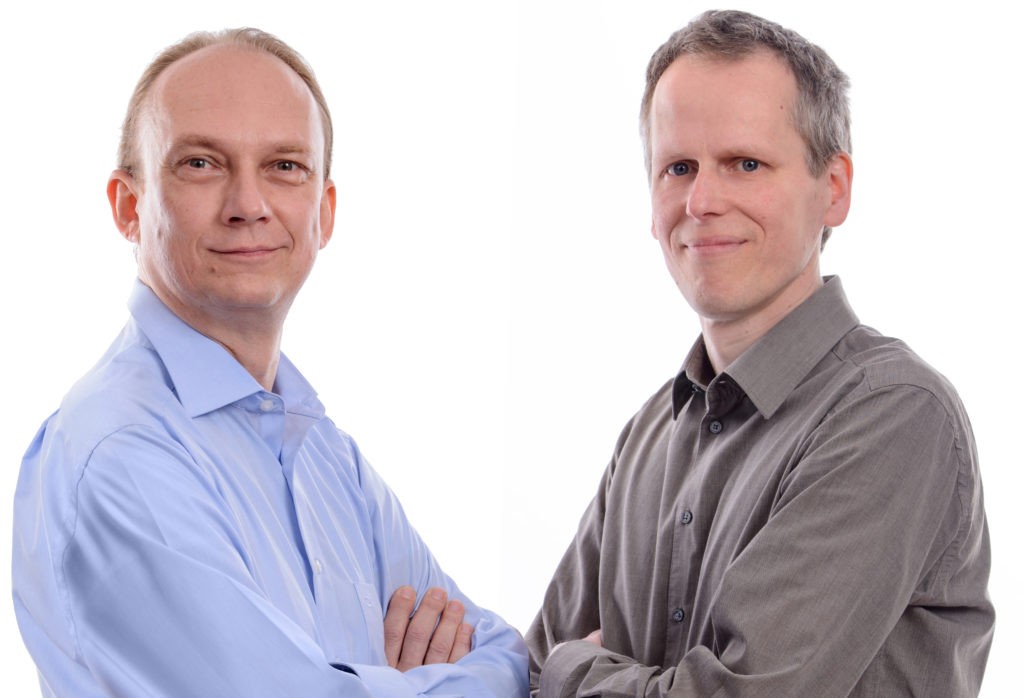
A year ago, Hamburg’s start-up eBlocker won the coveted Smart Home Initiative Award. That very same day, eBlocker’s fate was essentially sealed. A potentially major strategic partner withdrew their support for the company. Bankruptcy was inevitable.
Together with their employees, Christian Bennefeld and his business partner Boris Prinz had designed a product that protects the privacy of users while surfing the Internet. The device protected PCs, tablets, smart TVs, game consoles and IoT devices within home networks against malware, tracking and misuse of personal digital data. Now eBlocker is back.
Managing Director Christian Bennefeld talks about what caused the bankruptcy, how he brought eBlocker back to life and what he has learnt from the bankruptcy.
Why couldn’t a solution be found at the time of the bankruptcy?
It was just a matter of time. We were talking to several partners, some of whom were investors. But it’s tough once you’ve filed for bankruptcy as a starter. We had several tens of thousands of customers with our market-ready product, a monthly turnover of six figures and we were more or less on track.
We had already reached a point with one partner where everything seemed to be a safe bet. This partner withdrew half an hour before we received the SmartHome Award. I think the reason for that was that he was asked by the curator to pay a five-figure amount. Of course, not a single company would do that. Merely in order to continue with negotiations until it’s clear what the outcome will be. And since contracts take a certain amount of time to negotiate, the same amount would have been due again in another four weeks. So we just didn’t have time to complete negotiations successfully during the bankruptcy proceedings.
So what happened next?
We wanted to advance the technology for our customers in August to such an extent that users would no longer be adversely affected and would be able to continue to use the eBlocker with free filters. We also agreed to this with the curator. However, in the end we had to clear everything out within 14 days and were unable to continue working on the product. Still, we went on developing the technology further without being paid for it.
At first we thought of continuing as a non-profit organization. That didn’t work out. Prinz and I didn’t feel like taking over the software from the curator for a large sum of money. Eventually we were able to take over the technology for the symbolic sum of €1. We immediately launched a fundraising campaign aimed at our newsletter subscribers. That brought in more than €6000 within 23 hours. It meant a lot to us that our users appreciated us so much.

Was that why you went through with it? Out of idealism and to help others?
Yes. We don’t care about money. We believe in protecting privacy. We believe in privacy. We think it’s important to contribute to society. We didn’t want eBlocker to end up dead in the water. That was our real motivation. We all have other jobs and we all make our money in a variety of ways.
Okay, so it was down to the bankruptcy that you now offer eBlocker as open source for free?
No, not at all. We had this idea earlier, but we couldn’t interest any investors in it. But if you’re not looking for commercial opportunities, then that’s fine. The success we’re now having is proof that it works. Previously, we produced and sold the eBlocker as plug-and-play hardware. But for that we had to pre-finance the hardware. That was a huge part of the financial burden. Now users can buy a Rasberry Pi (single-board computer), which you hook up to the Plug & Play eBlocker. Plus, you need an SD card and a power supply. All you have to do is load our software onto that SD card. That’s all you need and you then you have your own eBlocker at home.
Further development as open source is done together with the community. We make sure that all costs are fully transparent. The idea is to run ongoing crowdfunding campaigns where users can donate individually for the things that are important to them. And if enough donations come in for that particular purpose, we can build that.
Therefore, the whole business is based on idealism?
Absolutely. We don’t have any employees. We’re not profit-oriented and we invest a lot of our time for free. So far, we’ve already achieved all of the goals that our users have donated to. I know what data giants are after and that terrifies me. I think those of us who are aware of what the dangers are, are also called upon to defend ourselves against these. On the legal and social side as well as on the technical side. I am fighting for data protection on both sides. I don’t want to leave this life without doing my bit to protect civilians from attacks on our data by those in power.
NDR broadcast: What the Internet knows about you.
What have you learnt from the bankruptcy?
A big mistake that I made was trusting an investor who I’ve known for 15 years. Nowadays I say: never trust an investor, even if you’ve known them for such a long time. Two weeks before the scheduled notary appointment, he cancelled it for fairly vague reasons, which put us in that situation. Also, never base a funding round on just one investor, even if they want to do it that way. I knew enough people who all wanted to invest, but as a result, I turned them down. You always have to keep other options open on the back burner just in case something goes wrong.
The second major mistake was: when do I file for bankruptcy? You do have some room for maneuver. If you have to file for bankruptcy, do it on time, because then different rules apply. We still had almost €300,000 in our account and were able to pay everything in full for the following three months. However, we had just signed a huge lease. All ongoing obligations such as lease contracts, telephone contracts, and server hosting count as debt. Consequently, bankruptcy became unavoidable.
The third thing is to immediately seek professional advice from an expert. We were too late in doing that. We first tried to find partners and investors ourselves. When we sought professional help at the end of March, obviously a lot of time had already passed.
What type of investor is suitable for a start-up?
I financed the start-up phase myself with an amount of seven figures. In order to bring professionals on board, I received subsidies from the High Tech Gründerfonds (HTGF) in Bonn and from the IFB Innovationsstarter Hamburg; both public funds. I also had three other ‘Business Angels’ on board. But what I had not anticipated is that public investors are not at all interested in providing support. They are so entangled in their bureaucracy that they tick off their checklists and basically leave the companies to their own devices.
When the investor dropped out, we promptly called a shareholders’ meeting and asked if they could provide extra funding. But the public investor informed us that the next investment meeting would not take place until a month later. So, we weren’t going to make it. My advice is: make sure you get professional investors like venture capitalists. But not public investors. At least not like with us, two major crowd-pleasers and three small-scale ones who weren’t able to invest any further.
And if bankruptcy turns out to be inevitable, then what?
We did everything right. Treat the curator well. Be transparent and work with them. Our curator has helped us well and has done a lot for us. The curator is not your enemy. If you do it right, they are your friend and you would do well to cultivate this friendship.







